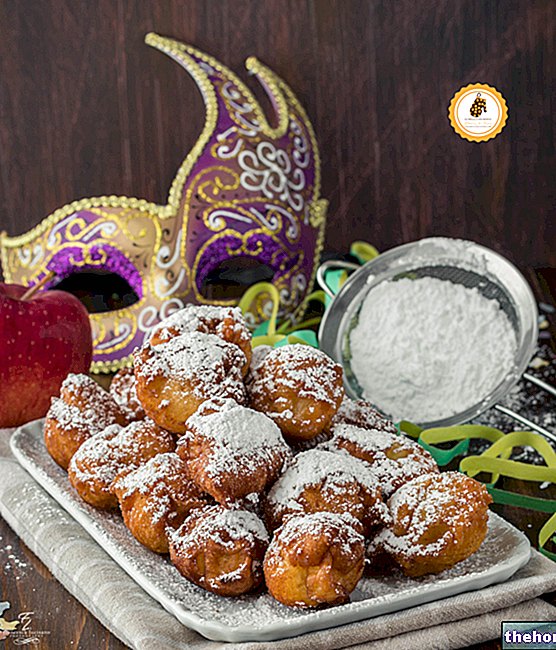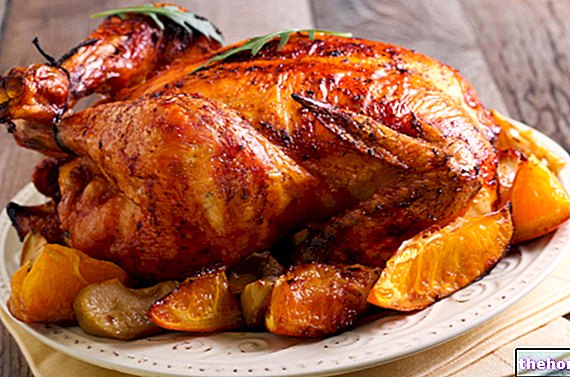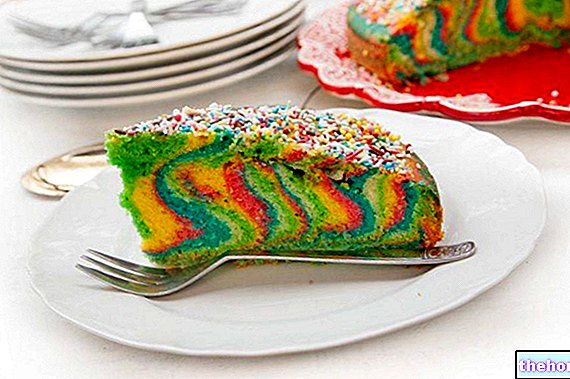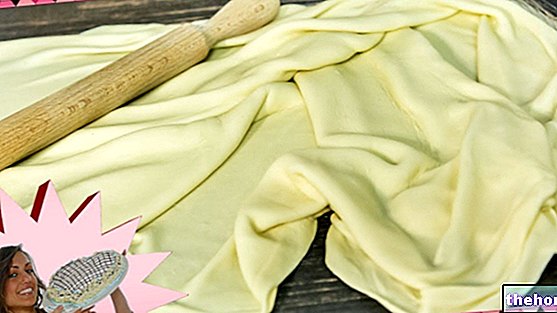Today my attention is turned to all people who, affected by celiac disease, must remove all foods rich in gluten from their diet. The food we will be transforming today is bread. Gluten, as we know, is very important for bread making, and allows us to obtain soft and delicious dough. gluten? Let's find out together with this recipe!
Video of the Recipe
Problems with playing the video? Reload the video from youtube.
Identity Card of the Recipe
- 381 KCal Calories per serving
-
Ingrediants
For the leavening
- 150 ml of water
- 12 g of brewer's yeast
- 25 g of dextrose
- 40 g of cornstarch
For the main dough
- 6 g of salt
- 135 ml of sparkling water
- 4 g of guar gum
- 20 g of powdered milk
- 75 g of cornstarch
- 100 g of potato starch
- 100 g of rice flour
- 3 tablespoons of extra virgin olive oil
Materials Needed
- Scale weighs food
- Bowls
- Transparent film
- Loaf pan (size: 9cm X 24cm X 10cm)
- Baking paper
- Sieve
Preparation
- Prepare the leavening: in a bowl, sift the cornstarch and add the dextrose (alternatively, use sugar). Warm the water and dissolve the brewer's yeast, stirring with a wooden spoon. Pour the liquid into the bowl and mix all the ingredients until you get a batter.
- Cover the bowl with a sheet of cling film and let it rise in a warm environment for half an hour or until the leaven is swollen and soft.
- When the leavening is ready, you can proceed with the realization of the main dough. In a bowl, combine all the dry ingredients, that is the flours (the corn starch, the rice starch and the potato starch), the powdered milk, guar gum and salt.
Why use guar gum?
Gluten-free doughs are very delicate and sensitive. The gums (eg guar gum, tara gum, xanthan gum) stabilize the structure of the dough and create a texture capable of retaining gases during yeast fermentation.- In the center, add the water, 2 tablespoons of oil and the yeast. Mix all the ingredients with a wooden spoon: you will have to obtain a semi-liquid mixture (not moldable with your hands).
- Cover the bowl with a sheet of cling film and leave to rise in a warm environment until doubled in volume.
Did you know that
Rising times can change significantly: this depends on the temperature and humidity of the environment in which you work. The dough is ready when the volume of the leavened batter is at least double that of the mixture before rising.
It is advisable to leave the bowl to rest in a warm oven (preheated to 200 ° C for 2 minutes) but turned off or, in the warm months, on a balcony, taking care to cover the bowl with cling film or with a cloth.- At this point, line a loaf pan with parchment paper and pour the dough. As soon as it is poured, the leavened dough deflates to become liquid again. Spread a tablespoon of oil on the surface of the dough and let it rise again until it reaches the edge of the pan: it could take 30-60 minutes.
- Preheat the oven to maximum temperature. When the oven is hot, gently insert the pan, taking care not to shake it and bake for 10 minutes at 250 ° C. Then lower to 180 ° C and continue for 30 minutes.
Did you know that
The high cooking temperatures are essential to fix the weak structure of the gluten-free bread. Unlike traditional bread, gluten-free bread does not increase in volume during cooking, on the contrary it even tends to decrease: this is why it is important to fix the structure by forming a crunchy crust.- Remove the bread from the mold, allow to cool and cut into slices. It can be stored for 2 days in a plastic bag or for 1 month in the freezer.
Alice's comment - PersonalCooker
With a few tricks we managed to obtain gluten-free bread, crunchy on the outside and soft on the inside! You can keep it for a couple of days and, to keep it soft, I recommend that you close it in a plastic bag. And if you have a few slices left over, you can reheat it and use it as a base for excellent bread pizzas!Nutritional values and Health Comment on the recipe
ATTENTION! The nutritional values shown on the side have been calculated for 100 grams of dough. In the finished bread, the macronutrients are clearly more concentrated due to the loss of water during cooking, which however cannot be quantified indirectly.
Gluten Free Bread is also a suitable food for celiac diet. It mainly provides complex carbohydrates, few proteins and a fair concentration of lipids (especially monounsaturated). Cholesterol is not very significant, as are fibers.
The average portion of Gluten Free Bread varies according to the food composition of the diet and must be in close balance with all foods that provide high concentrations of carbohydrates.























-nelle-carni-di-maiale.jpg)




